BOOKS
Other Selected Writing
Contemplating the Reflection of the Moon in a Pool : Musing on museums of the future
Netherlands Museums Association, Amsterdam 2004
Gallery of Modern Art Glasgow: The First Years
Scala Books 1996 ISBN 1 85759 121 6
Introduction to Happy Days by Beryl Cook
Victor Gollancz 1995 ISBN 0 575 06192 8
Glasgow’s Great British Art Exhibition
Glasgow Museums 1990 ISBN 0 902752 41 3
Is There Life in Museums?
W H Smith Contemporary Papers 1990
Lowry: The Paintings and Drawings
The Herbert Press in association with the South Bank Board 987
The Art of Watercolour Painting
Manchester City Art Galleries 1987
Three Little Books on Painting
1) light
2) movement
3) image
Arts Council of Great Britain 1984
The Forgotten Fifties
Sheffield Cty Art Galleries 1984 ISBN 0 863210 15 5
Francis Davison
Redfern Gallery, London
Fragments Against Ruin: a Journey through Modern Art
Arts Council of Great Britain 1981
Lowry
Phaidon Press 1979 ISBN 0 714819 96 4
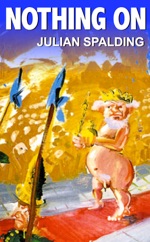
Con Art : Why you should sell your Damien Hirst while you can
2012
Available on: Amazon Kindle
A precise explosion of the myths that created Con Art – above all the myth that art has to shock to be new.
The multi-million dollar reputations of Duchamp, Andre, Beuys, Warhol, Koons, Hirst, Gormley and many others, lie in tatters when you’ve read this book. Did you know that Duchamp stole the whole urinal pisstake from a woman? Learn about this and many other cons...
Nothing On - a novel
2012
Available on: Amazon Kindle
Darren Wurst, con artist, Felix Nosferat, marketing guru, Hilary Dick, gallery director and Geoffrey Toupay carve up the art cake, while, Vince Rae, a real artist...
A hilarious bomb dropped in the centre of the con art world, penned by a leading gallery director who knows all the goings on and who pulls whose strings ...

The Best Art You’ve Never Seen : 101 Hidden Treasures from around the World
Rough Guides Ltd 2010 ISBN 978-1-84836-271-0
Available at: Amazon
From the Introduction:
The 101 artworks illustrated in this book have all, at some point or in some way, been hidden from view….This book is a plea for the right to see the great art of the world. More than that, it is a cri de coeur for the creation and showing of much better art today. If readers put down this book feeling more ambitious about what they would like to receive through their eyes, it will have done its job.

The Art of Wonder : A History of Seeing
Prestel 2005 ISBN 3-7913-3150-7
Available at: Amazon
From the Introduction:
People often think they can’t begin to appreciate art from other cultures and ages because it’s too distant, but no art is incomprehensible, because it’s all made by human beings. We’re exactly the same as the people who built the Pyramids and the Forbidden City and who painted pictures in Renaissance Italy. Phidias, Leonardo and Picasso had eyes, hearts and brains just like ours; they had brilliant minds, it’s true, but we can go a long way to understanding their art by using our own eyes, hearts and minds. In spite of all the changes we’ve made to the planet, the sights of nature haven’t changed, and nor have we in any fundamental way. What’s changed, and changed dramatically, is what we think we’re looking at when we see a sunset, a flower or a gleam in someone else’s eye. To understand the art of other ages and cultures, we have to make an imaginative leap into the minds of the people who made it. And to do that we have to try to forget our modern ideas about art, history and about seeing itself. Only then will we be able to look around us again, as people did until very recently, and wonder at the miraculous appearance of the world…
Winner of the Banister Fletcher Prize for the best new art book of 2006.
Praise for The Art of Wonder:
‘It does for art what Stephen Hawking’s book A Brief History of Time did for science… a thoroughly good read.’
Washington Daily News
‘Written with a beautiful lucidity…’
A.C. Grayling, The Art Newspaper
‘This is not just a book about wonder; it’s a wonderful book.’
James Hamilton, History Workshop Journal

The Eclipse of Art : Tackling the Crisis in Art Today
Prestel 2003 ISBN 3-7913-2881-6
Available at: Amazon
This book so horrified the art world that they turned their backs on it and refused to give it any publicity or credibility. It would have been all right for an ignorant outsider to attack modern art - that would just have proved that the art world was on the right track, being in advance of popular perception - but for an insider, a top museum director and specialist in modern art, to say publicly that most modern art is crap (some literally) was unforgivable. The book was systematically buried. On one of the few occasions when it did surface, it was rubbished - by Waldemar Januszczak, one of the most assiduous courtiers of the trendy, who, writing in the Sunday Times, accused Julian Spalding of being 'like Hitler on a mountain top dreaming up the Nazi party'. Yet the author begs to suggest that the book's sober, informed analysis merits consideration.
From the Introduction:
This book has been written for people who, though they enjoy art in general, have become confused and disenchanted by the art of our times. It has been written for those who feel sure they can respond to art and want to remain open-minded, but can see very little merit in what is being promoted as art today. It has been written, above all, for those who know they have a right to their opinions but no longer feel they have the right to express them. The aim of this book is to give people back the power to make up their own minds about what is good and bad in modern art, together with the ammunition to back those judgements up. It argues that until the public for art reclaims its right to applaud and condemn, the art of our age will remain in the dark, the self-indulgent plaything of a few.
Praise for The Eclipse of Art:
‘Julian Spalding’s elegant, persuasive and timely blast against all things Saatchi and Serota.’
Nick Hornby, The Independent on Sunday
‘In every field there are a few individuals--dubbed mavericks or fools, depending on one's perspective--who dare depart from the received wisdom. One such fiercely independent soul in the world of art is Julian Spalding’
Louis Torres, Aristos (Full Review)
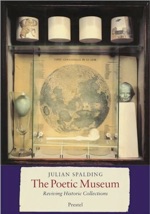
The Poetic Museum : Reviving Historic Collections
Prestel 2002 ISBN 3-7913-2678-3
Available at: Amazon
From the Introduction:
Readers may wonder why anyone would want to write a book about museums, let alone read one. Those who are interested in pictures or insects or engines might want to read a book about them, but not one about the organizations that keep them. But museums are not just passive receptacles: they are institutions with a long and complex history, imbued with all sorts of peculiar, ingrown practices, many of which date back hundreds of years. Most importantly, museums select what they collect and therefore influence what we think about the past.
Praise for The Poetic Museum:
‘In this precious jewel of a book, each page is filled with unexpectedly poetic and profoundly alluring insights into past and present… Superlative praise is not an exaggeration when describing the ten engaging, provocative, enthusiastically written chapters…Wholeheartedly recommended.’
Choice
‘One of the most stimulating and approachable books about museums I have ever read.’
Colin Ford, BBC Radio 4
‘Spalding’s book deserves to be read by all in our sector because it is an insider’s perspective expressed without fear.’
Museums Journal












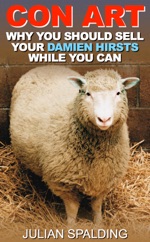
All content © Julian Spalding
Catalogue Raisonne of Sculpture| Elisabeth Frink
Available at: Amazon
The new Elisabeth Frink Catalogue RAISONNE, for which Julian has written the main essay, is out on 9th April 2013.
This catalogue is published by Lund Humphries.
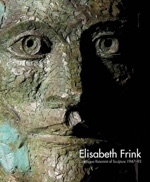
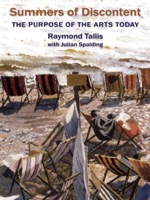
Summers of Discontent
2014
Available on: Amazon
Since the time of the ancient Greeks, philosophers have pondered the nature and purpose of the arts, but artists have gone on making them and audiences enjoying them regardless of these musings. None of their theories have met with universal or even popular acceptance. But here is theory that places the arts—all the arts—firmly and squarely within everyone's everyday experiences.
Summers of Discontent goes to the heart of the arts. It's an examination of why artists create them in the first place and why we all feel the need for them. Raymond Tallis thinks the arts spring from our inability as humans fully to experience our experiences; from our hunger for a more rounded, more complete sense of the world.
Tallis's thesis is original and fresh, down-to-earth and life-enhancing. Above all it is practical and intelligible. It will inspire anyone who feels the creative urge today, or anyone who wants to understand why and how the arts enrich their lives and those of others.
Raymond Tallis is a leading academic doctor, poet, philosopher, and cultural critic. Author of more than twenty books, he was until his retirement professor of geriatric medicine at the University of Manchester.

Realisation
2015
Available on: Amazon
In his earlier book The Art of Wonder – A History of Seeing (winner of the Sir Banister Fletcher Prize, 2006), former museums director, Julian Spalding demonstrated how art has always been the product of our attempt to make sense of the mysteries around us.
Throughout Realisation, Spalding offers many totally new thought-provoking explanations of iconic works of art. Just a few examples are that:
• Stonehenge wasn’t used at ground level, but supported a raised, circular, wooden platform (now lost) on top of which worshippers performed ceremonies to the rotating heavens;
• Pyramids were not primarily tombs or support structures for temples, but realisations of the massive forces that were believed to bind the flat world together;
• Michelangelo’s Sistine Ceiling was not primarily a display of superhuman genius but a triumphant re- assertion that heaven still stood above us though the earth was a sphere; and that
-
•Munch’s The Scream caught the world’s imagination not just as an image of human angst but because it was also a depiction of the last symbolic sunset, for everyone now knew that the sun didn’t set. The veil of beauty that had enchanted creation till then had been torn asunder by the scientific discoveries of the Enlightenment.


by Julian Spalding
My suggestion that Stonehenge was probably neither a temple nor a calendar but most likely a raised, ceremonial altar used by hundreds of people has attracted considerable attention and some criticism from archaeologists. I’ve nothing against archaeology, but let me make clear that my idea didn’t come from digging into the ground. It came, instead, from looking up at the stars and wondering what our ancestors thought about them when they thought the earth was flat.
When Don Marcelino Sanz de Sautuolo explored the Altamira cave in 1879 he dug in the floor. It never occurred to him to look up. It was his young daughter, Maria, who pointed to the ceiling and shouted: “Look Papa, oxen!” So the first cave paintings were discovered. It’s my contention that we’ve been looking in the wrong direction when we’ve interpreted many of the great monuments and works of art of the past.
We still think the pyramids are mysterious, but actually they were products of common sense. They are virtually identical in Mexico, Egypt and China – not because one civilisation learned how to build them from another but because they thought alike. Thor Heyerdahl’s Kon-Tiki expedition was a product of the European enlightenment’s belief in progressive learning. Disparate peoples built identical pyramids because they didn’t know others existed. Each thought they were living in the centre of a flat world.
Piles of stones or earth naturally form cones but there are no massive cones in ancient history. The reason is simple: cones form circles and, therefore, couldn’t be on the ground. A circle was the shape of heaven. The flat earth had to be square because it had four directions – north, south, east and west. That’s why all pyramids are four-sided, and, incidentally, extremely difficult to build.
The reason for pyramid building was simple: they harnessed the mysterious forces that we believed held the world together – the sea’s flat horizon that ran through the earth, the invisible force of gravity that dragged us down to our graves and the spirit of life which, like flames that always rise, lifted us to our eternal, future home among the stars. The bigger and heavier we could build them, the more pyramids concentrated the powers of the universe against the ceaseless changes on earth that brought so many calamities. They weren’t symbols of celestial bodies but forces for permanence on earth. That’s why pyramids looked alike.
Michelangelo’s ceiling in the Sistine Chapel is another instance of us looking in the wrong direction. We see it as the extraordinary achievement of an isolated genius. It was, but it was also a product of its times. When it was painted, Columbus had just sailed over the edge of the world and come back. The world was a sphere. No one could doubt it any more.
But that caused tremendous problems for the pope. If the world was a sphere, albeit fixed in the centre of the universe, and the stars went round it, where, then, was heaven? It couldn’t be all round us too, because that would mean heaven was under our feet. In 1506, Pope Julius had the old, rectilinear St Peter’s pulled down and a new one built that would be all curves, with its famous colonnade embracing the round world. And he commissioned Michelangelo to paint the ceiling to show that heaven was still in place, above us.
The Vatican didn’t formally accept Galileo’s theory that the world was a sphere spinning around the sun until 1992. Old world views can linger in our minds long after science has shown them to be untrue. In my book Realisation I’ve shown how our world view morphed from a body into a tree into a pyramid, then an altar and lastly a veil until science tore them all asunder. But shadows of these old world pictures still linger in our minds, and prevent us seeing where we truly are.
-
•This article was amended on 20 March 2015. It is the Altamira cave, not the Altimira cave as we had it.
